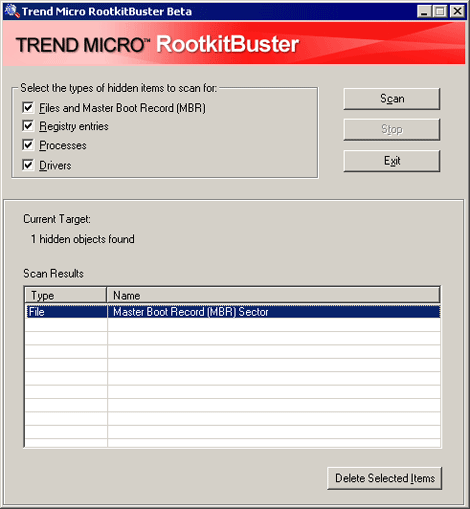BKDR_TURLA.A
BDS/Turla.A.5 (AntiVir), Win32/Turla.N (Eset), Backdoor:W32/Agent.DUTD (Fsecure), W32/Turla.N!tr (Fortinet), Backdoor.WinNT.Turla (Ikarus), Trojan.Win32.Nus.d (Kaspersky), RDN/Generic BackDoor!wm (McAfee), Backdoor:WinNT/Turla.A (Microsoft), Troj/Turla-C (Sophos), Trojan.Turla (Symantec)
Windows 2000, Windows Server 2003, Windows XP (32-bit, 64-bit), Windows Vista (32-bit, 64-bit), Windows 7 (32-bit, 64-bit)


Threat Type: Backdoor
Destructiveness: No
Encrypted: Yes
In the wild: Yes
OVERVIEW
This backdoor arrives on a system as a file dropped by other malware or as a file downloaded unknowingly by users when visiting malicious sites.
It also has rootkit capabilities, which enables it to hide its processes and files from the user.
TECHNICAL DETAILS
Arrival Details
This backdoor arrives on a system as a file dropped by other malware or as a file downloaded unknowingly by users when visiting malicious sites.
Installation
This backdoor drops the following copies of itself into the affected system and executes them:
- %Windows%\$Ntuninstall{random}$\fdisk.sys
(Note: %Windows% is the Windows folder, which is usually C:\Windows.)
It drops the following component file(s):
- %Windows%\$Ntuninstall{random}$\hotfix.dat
(Note: %Windows% is the Windows folder, which is usually C:\Windows.)
It creates the following folders:
- %Windows%\$Ntuninstall{random}$
(Note: %Windows% is the Windows folder, which is usually C:\Windows.)
Autostart Technique
This backdoor registers itself as a system service to ensure its automatic execution at every system startup by adding the following registry entries:
HKEY_LOCAL_MACHINE\SYSTEM\CurrentControlSet\
Services\Ultra3
ErrorControl = "0"
HKEY_LOCAL_MACHINE\SYSTEM\CurrentControlSet\
Services\Ultra3
Type = "1"
HKEY_LOCAL_MACHINE\SYSTEM\CurrentControlSet\
Services\Ultra3
Start = "1"
HKEY_LOCAL_MACHINE\SYSTEM\CurrentControlSet\
Services\Ultra3
Group = "Streams Drivers"
HKEY_LOCAL_MACHINE\SYSTEM\CurrentControlSet\
Services\Ultra3
ImagePath = "%Windows%\$Ntuninstall{random}$\fdisk.sys"
It registers as a system service to ensure its automatic execution at every system startup by adding the following registry keys:
HKEY_LOCAL_MACHINE\SYSTEM\CurrentControlSet\
Services\Ultra3
Rootkit Capabilities
This backdoor also has rootkit capabilities, which enables it to hide its processes and files from the user.
NOTES:
It hooks the following APIs so that when called, it perform its malicious routine:
- IoCreateDevice
- IofCallDriver
- NtClose
- NtQuerySystemInformation
- NtReadFile
- NtShutdownSystem
- ObOpenObjectByName
- ZwCreateKey
- ZwCreateThread
- ZwEnumerateKey
- ZwQueryKey
- ZwSaveKey
- ZwTerminateProcess
SOLUTION
Step 1
Before doing any scans, Windows XP, Windows Vista, and Windows 7 users must disable System Restore to allow full scanning of their computers.
Step 2
Using Trend Micro Rootkit Buster
RootkitBuster is a rootkit scanner that can check through hidden files, registry entries, processes, drivers, and hooked system services.
To use this tool, do the following:
- Download the tool from the following link and extract it to a temporary folder:
https://www.trendmicro.com/download/rbuster.asp - Run the RootkitBuster.exe file.
- On the upper left corner, select the types of hidden items that you wish to scan. We recommend selecting all types.
- Click the Scan button.
- The system is infected by this malware if the Scan result is similar to the image below:

Step 3
Restart in Safe Mode
Step 4
Delete this registry key
Important: Editing the Windows Registry incorrectly can lead to irreversible system malfunction. Please do this step only if you know how or you can ask assistance from your system administrator. Else, check this Microsoft article first before modifying your computer's registry.
- In HKEY_LOCAL_MACHINE\SYSTEM\CurrentControlSet\Services
- Ultra3
- Ultra3
Step 5
Search and delete these folders
Step 6
Scan your computer with your Trend Micro product to delete files detected as BKDR_TURLA.A. If the detected files have already been cleaned, deleted, or quarantined by your Trend Micro product, no further step is required. You may opt to simply delete the quarantined files. Please check this Knowledge Base page for more information.
Did this description help? Tell us how we did.


